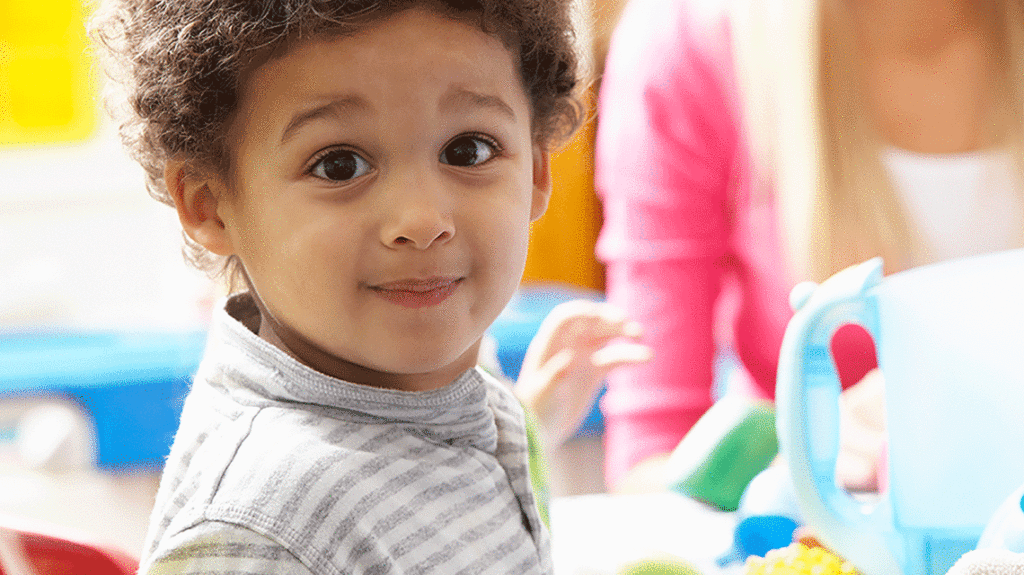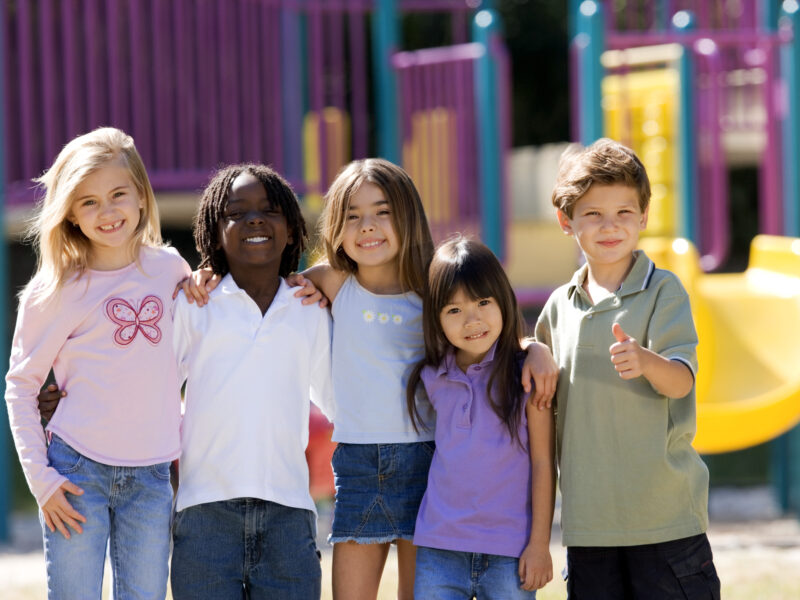The Childhood Roots of Illness
The Childhood Roots of Illness https://pediatricsnationwide.org/wp-content/uploads/2020/12/AdobeStock_32667489_mr-executive-functions-header-1024x575.gif 1024 575 Dave Ghose Dave Ghose https://secure.gravatar.com/avatar/f146b259ebc8ba9d52ea9ef823792abf?s=96&d=mm&r=g- July 14, 2015
- Dave Ghose

A growing body of scientific evidence reveals the dramatic impact of early-life adversity on lifelong health.
Kelly Kelleher, MD, compares childhood health to a boulder sitting on the peak of a mountain. A slight push could send the boulder in many directions. And once it starts rolling, it’s hard to change its path. The same goes for children. What happens to them early in life can send them hurtling toward or away from a lifetime of good health.
Over the past two decades, research has confirmed this idea, showing the biological connections between childhood adversity and poor health later in life. Most people, of course, recognize the importance of childhood. However, recent research has raised the stakes, revealing how poverty, violence, parental dysfunction and other social factors can alter the architecture of the brain and lead to such health problems as heart disease, obesity, depression and substance abuse.
“The longer you’re in a high-risk class, the more health deficits you accrue,” says Dr. Kelleher, director of the Center for Innovation in Pediatric Practice at Nationwide Children’s Hospital.
At the heart of the problem is what pediatric researchers call “toxic stress,” chronic adversity that can overwhelm a child. To be sure, some stress is good. In fact, adversity can help children develop resilience and coping skills with the support of caring adults. But when the adversity is constant — and adults don’t help children feel safe and emotionally connected — then the stress can turn toxic.
“Research has demonstrated that stress is not just correlated with illness, but it actually is related to biological changes that we know affect rates of illness,” says Tom Boyce, MD, professor of pediatrics at the University of California San Francisco.
The discovery highlights the importance of childhood and prenatal programs. For these early-life interventions to succeed, however, they require a new way of thinking: a coordinated, comprehensive approach that addresses the wide variety of environmental conditions — from crime to nutrition to poor housing — that influence lifelong health.
“That’s why we talk about how being born healthy, learning healthy and living healthy all fit together now,” Dr. Kelleher says. “The education system, the neighborhood and the health care system are not separate anymore.”
The Biology of Childhood Stress
For much of the 20th century, scientists viewed conditions such as stroke, heart disease and diabetes as largely products of adult behavior and lifestyles. Dr. Boyce recalls presenting research on the links between long-term health and childhood adversity in the 1970s and getting bewildered reactions from his colleagues, who couldn’t accept the idea that stress could get into the body and affect children’s immune systems and rates of illness.
“People sort of thought that things that happen in the psychological life of a child as completely separate from things that happen in the biological bodily experience,” Dr. Boyce says.
That began to change toward the end of 20th century. In the 1980s, David Barker, a British physician and epidemiologist, noticed in the United Kingdom a strong geographic correlation between neonatal and post-neonatal mortality and death from heart disease 60 to 70 years later. The discovery shaped what became known as the “Barker hypothesis” — that the environment of the fetus and infant can determine pathologies later in life.
The idea was supported by the landmark ACE Study, an ongoing collaboration between the U.S. Centers for Disease Control and Prevention in Atlanta and Kaiser Permanente’s Health Appraisal Clinic in San Diego. In the late 1990s, the study surveyed more than 17,000 patients about their adverse childhood experiences (ACEs), including abuse, neglect and family dysfunction. The findings showed that traumatic experiences pose major risk factors for the leading causes of illness and death.
Since then, scientific research has provided a deeper understanding of early-life exposures. In 2000, the Institute of Medicine and National Research Council released From Neurons to Neighborhoods: The Science of Early Childhood Development, an influential report that synthesized research on the topic. The report described the scientific evidence as “incontrovertible” on the developmental impacts of early experience. The effect could be felt even before birth. Individuals exposed to severe nutritional deficits in utero during the Dutch famine of 1944, for instance, showed a higher prevalence of heart disease 50 years later.
“The question today is not whether early experience matters,” the report declared, “but rather how early experiences shape individual development and contribute to children’s continued movement along positive pathways.”
Environmental factors such as extreme poverty, recurrent physical or emotional abuse, chronic neglect and severe maternal depression can result in prolonged activation of the body’s stress-response systems. This phenomenon, according to research, can lead to early genetic aging, heightened immune responses and behavioral and cognitive problems, such as anxiety, aggression and memory lapses.
Elevated cortisol can cause emotional and physiologic dysregulation. “When you’re a kid who doesn’t have anybody to turn to, and you go from one stressful event to another in a dangerous place, and you don’t have a calming influence in your life, what happens is your brain has constant cortisol, and you down regulate,” Dr. Kelleher says. “You can’t learn. You can’t interact with others effectively. You appear flattened emotionally — depressed, basically.
“So we have a whole bunch of kids whose systems have shut down. They can be angry. They can be sad. But they’re not learning. They’re not growing in development. They’re not developing social skills and resilience. And so this has physical consequences. Their bodies are more likely to get infected, more likely to have asthma, more likely to have these other problems.”
Finding a Solution
What can researchers, medical professionals and policy makers do to help children facing these kinds of adverse early-life conditions? A good first step is finding tools to identify kids at most risk. A recent study in Pediatrics showed that measuring cortisol in hair could be a useful way of assessing the stressfulness of children’s environments.
Research also indicates that high quality childhood intervention programs can have a significant impact. In 2014, a team of scientists, including Nobel-winning economist James Heckman, published a study in Science looking at the Abecedarian preschool program, a North Carolina social experiment in the 1970s that tested whether an intellectually stimulating early childhood environment could prevent developmental delays among poor children. The 2014 study found that participants had significantly better health, such as lower risks for heart disease and diabetes, than similar individuals who weren’t in the program.
“This was a breakthrough in terms of direct health evidence of the effect of early childhood development programs,” says Paula Braveman, MD, MPH, the director of the Center on Social Disparities in Health at the University of California San Francisco. “The participants were around age 35, and the idea that the effect of that intervention could still be seen three and a half decades later is mind-boggling.”
Indeed, nurturing adults can shield children from stressful environments. If you can provide or restore sensitive caregiving relationships, you can foster remarkable recoveries in children, researchers have concluded. But interventions must recognize the complex socioeconomic problems that surround the issue. If advocates don’t address housing instability, income disparity and other poverty-related factors, even the most well-meaning and stimulating preschool program will be undermined. “There is no single magic bullet,” says Dr. Braveman, the co-author of a 2014 report from the Robert Wood Johnson Foundation on early childhood experiences.
Nationwide Children’s Hospital took that lesson to heart when it created its Healthy Neighborhoods, Healthy Families initiative (HNHF). Launched in 2008, HNHF aims to improve the health and well-being of the struggling Columbus neighborhood just south of the hospital through intervention programs in five areas: education; affordable housing; health and wellness; safe and accessible neighborhoods; and workforce and economic development.
Angela Mingo, who oversees the HNHF housing program in her role as the director of community relations for Nationwide Children’s Hospital, says the hospital and its community partners have spent $15 million to acquire and fix blighted and vacant properties in the neighborhood, as well as provide grants for residents to renovate their homes.
So far, more than 100 properties have been improved. Mingo says HNHF has focused on the worst housing in the neighborhood. “And it’s not just visual,” Mingo says. “It’s what comes with that property — loitering, solicitation, things that shouldn’t have been there in the first place. So we’ve been able to eradicate some of the negative impacts that vacant and blighted properties have on the neighborhood.”
The initiative also is tackling other harmful social conditions, such as poor nutrition, family dysfunction and unemployment. HNHF sponsors a farmer’s market, encourages pre-K literacy, offers a leadership academy for residents and provides mentors for children. Next year, construction will begin on a workforce housing project called Career Gateway Homes. The multifamily development in a former elementary school will provide both housing and job training for residents.
For HNHF to succeed, however, it can’t just connect with the usual suspects — churches, block watches, civic associations and schools. It also must engage the most marginalized people in the neighborhood. First Birthdays, a program that targets high-risk moms, aims to connect with this difficult-to-reach group. Every three months, First Birthdays hosts a party to celebrate babies in the neighborhood who’ve turned one. The program addresses a serious problem. “Infant mortality rates in Columbus’s south side are among the worst in the nation, particularly among African-American babies,” says Doug Wolf, HNHF’s community engagement manager.
First Birthdays’s goal is early engagement. In May, 53 families, including 20 pregnant women, attended the most recent party — up from 22 families including four pregnant women, at the first party in November 2014. Advocates hope to start a pipeline in which these moms and families participate in other programs, such as pre-K literacy. They also hope to create more “social cohesion and a social networks tied to having improved health outcomes,” says Wolf, who works with Community Development for All People, a faith-based nonprofit, to coordinate First Birthdays.
HNHF leaders predict change will come slowly. Advocates say it will take two generations to address the childhood origin of disease in the south side of Columbus and other struggling communities. “It’s complex,” Mingo says. “It has to be long-term to make the impact that many want to see.” Still, Nationwide Children’s Hospital leaders are encouraged by the early results of HNHF. “We’re seeing little turns in infant mortality,” Dr. Kelleher says. “We’re seeing improvement in the unemployment rate in our neighborhood. It’s early, but it feels like there’s hope developing.”
References:
- Braveman P, Egerter S, Arena K, Aslam R. Early childhood experiences shape health and well-being throughout life. Robert Wood Johnson Foundation. 2014.
- Campbell F, Conti G, Heckman JJ, Moon SH, Pinto R, Pugello E, Pan Y.Early childhood investments substantially boost adult health. Science. 2014 Mar;343(6178):1478-1485.
- Karlen J, Ludvigsson J, Hedmark M, Faresjo A, Theodorsson E, Faresjo T.Early psychological exposures, hair cortisol levels, and disease risk. Pediatrics. 2015 Jun;135(6):1450-1457.
- Shonkoff JP, Boyce WT, McEwen BS. Neuroscience, molecular biology, and the childhood roots of health disparities. JAMA. 2009 Jun;301(21):2252-2259.
- Shonkoff JP, Phillips DA. From neurons to neighborhoods: the science of early childhood development. The Institute of Medicine and National Research Council. 2000.
Image credit: Adobe Stock
- Posted In:
- Features





